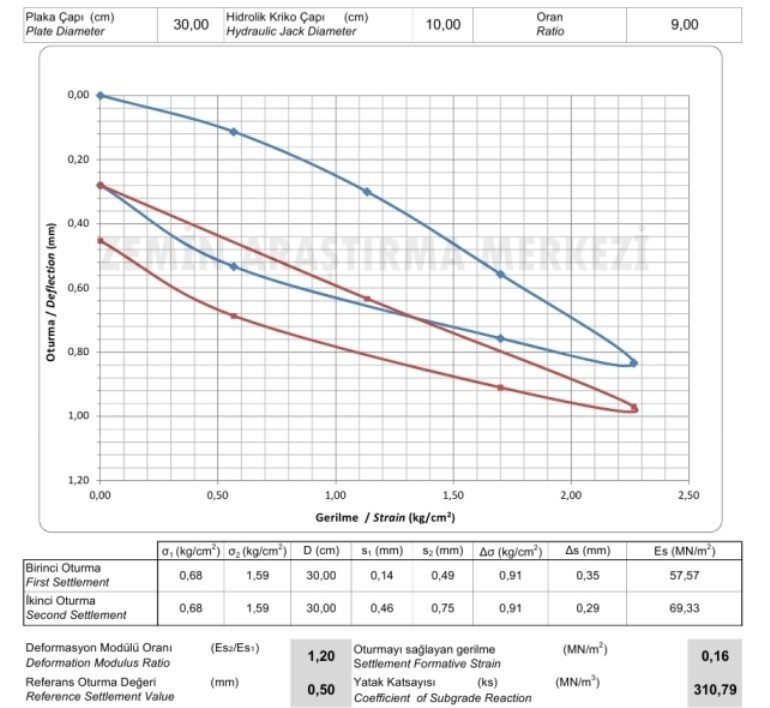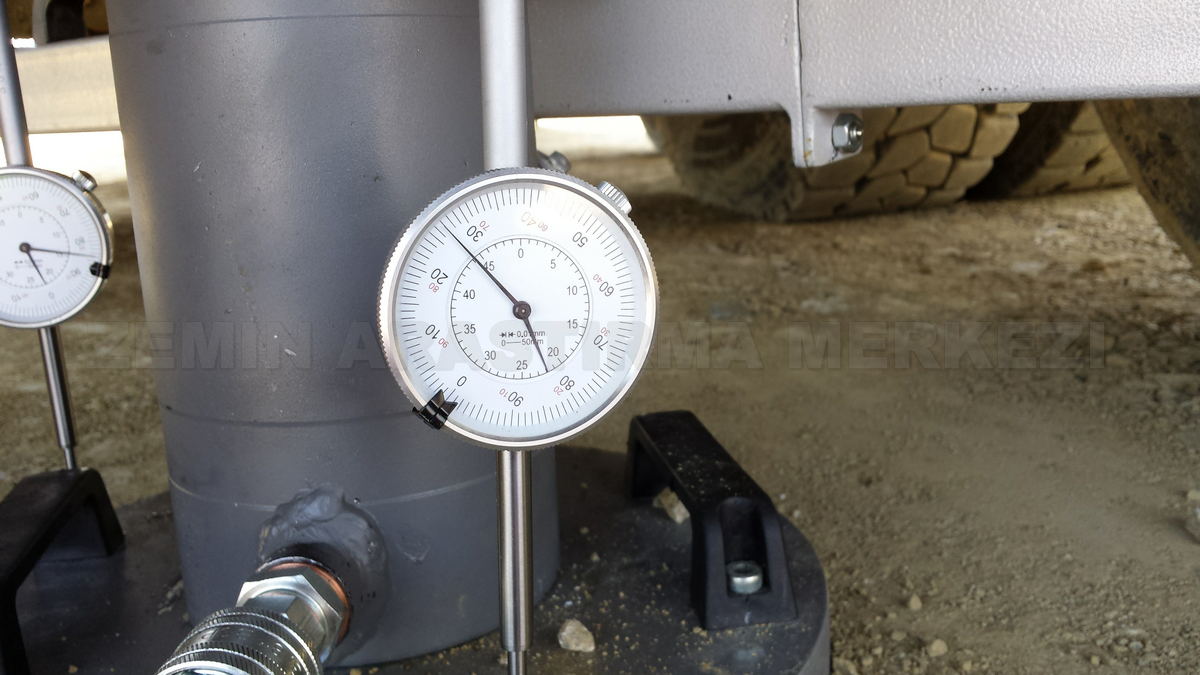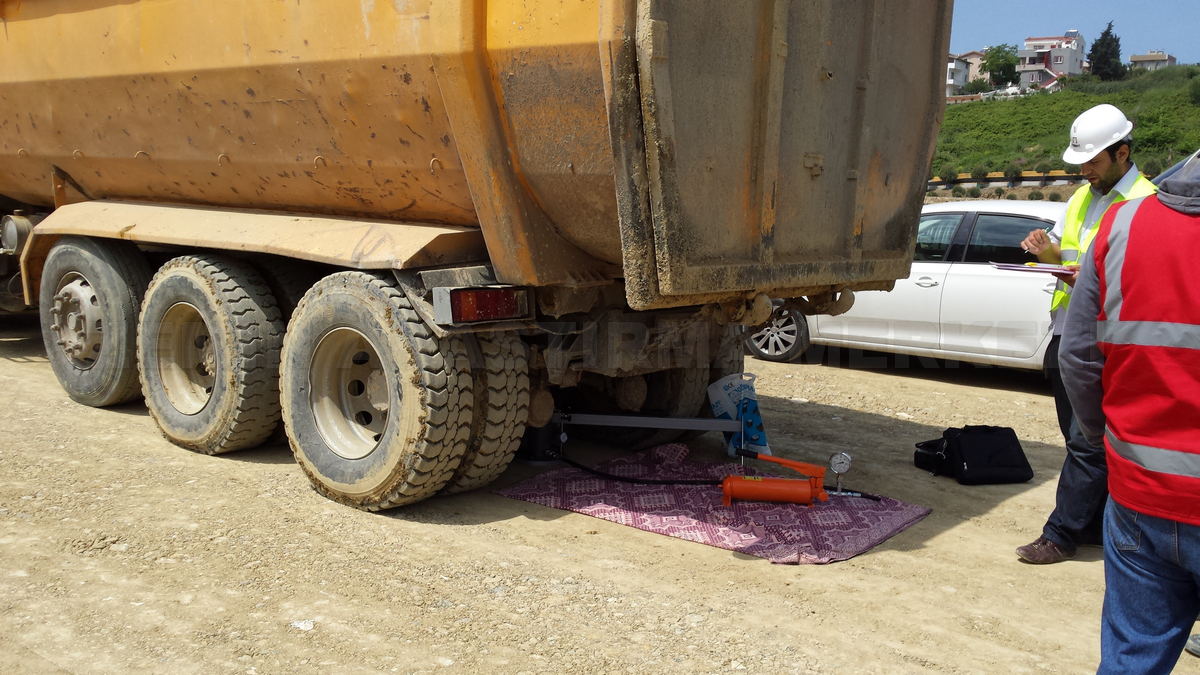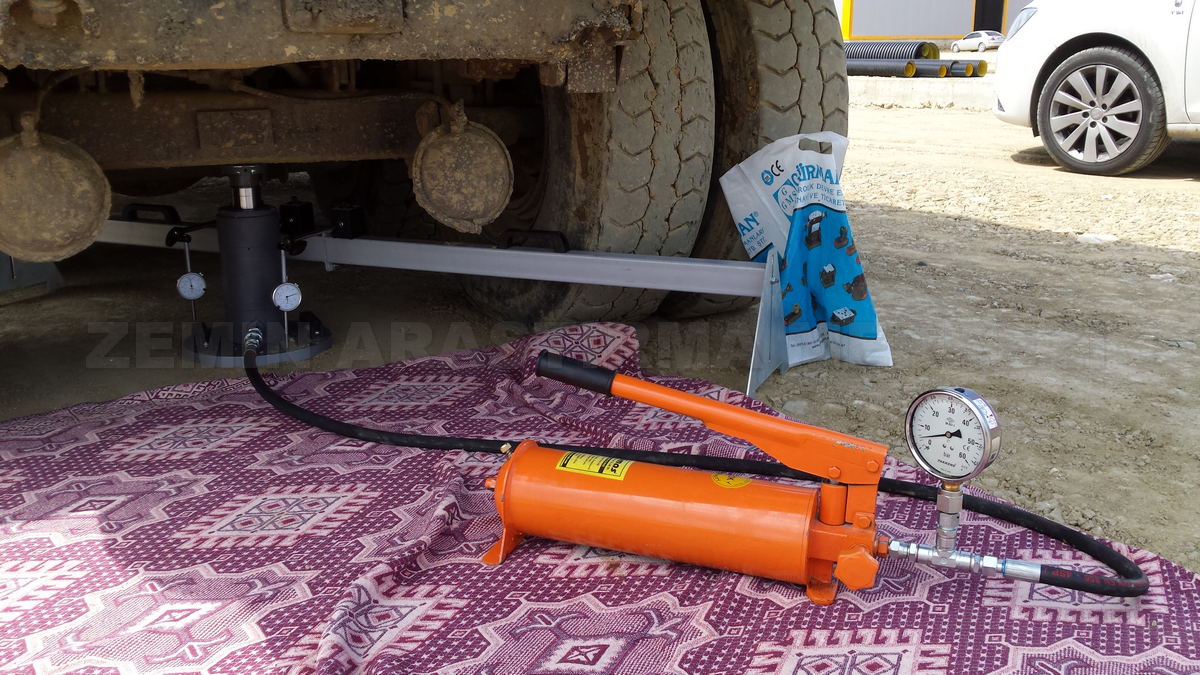Plate Bearing Test
Plate Bearing Test The Plate Bearing Test (or Plate Loading Test) is an insitu site investigation field test used for determining the ultimate bearing capacity of the ground and the likely settlement under a given load.
While site investigations for most projects consider ground conditions at depth, the strength and variability of the near surface ground is critical for the design and operation of working platforms. The Plate Bearing Test is typically used in the design of temporary working structures such as working platforms for piling rigs or pads for crane outriggers. Approximate equivalent CBR values can be derived from the Modulus of sub grade reaction by use of mathematical relationship.
The Plate Bearing Test is carried out in accordance with BS 1377 Part 9: 1990. It basically consists of loading a steel plate of known diameter and recording the settlements corresponding to each load increment. The test load is gradually increased till the plate starts to settle at a rapid rate. The total value of load on the plate divided by the area of the steel plate gives the value of the ultimate bearing capacity of soil. A factor of safety is applied to give the safe bearing capacity of soil.
While site investigations for most projects consider ground conditions at depth, the strength and variability of the near surface ground is critical for the design and operation of working platforms. The Plate Bearing Test is typically used in the design of temporary working structures such as working platforms for piling rigs or pads for crane outriggers. Approximate equivalent CBR values can be derived from the Modulus of sub grade reaction by use of mathematical relationship.
The Plate Bearing Test is carried out in accordance with BS 1377 Part 9: 1990. It basically consists of loading a steel plate of known diameter and recording the settlements corresponding to each load increment. The test load is gradually increased till the plate starts to settle at a rapid rate. The total value of load on the plate divided by the area of the steel plate gives the value of the ultimate bearing capacity of soil. A factor of safety is applied to give the safe bearing capacity of soil.
The Plate Bearing Test is normally carried out at foundation level, either on the surface or in a shallow pit. Plates of varying sizes up to 720mm diameter are available. The loading plate is placed on the ground and connected via a load cell to a reaction load. Due to the larger size of the plate used (compared with a CBR test) this test is more suitable for testing larger aggregate backfills, however, it requires a larger reaction load. Typically, a minimum 15tonne tracked excavator or other suitable plant is required for us to use as a reaction load.
Our Engineers will advise on the plate diameter required to match the anticipated design load and reaction load required (i.e. size of excavator) to be made available for us on site. We will typically complete 4-6 tests in a day subject to site conditions and can provide you with the results the following day.
The plate is loaded by hydraulic jack and its settlement measured in increments. The results can then be used to determine whether the ground has sufficient bearing capacity to support structures or temporary cranes or piling rigs
Our Engineers will advise on the plate diameter required to match the anticipated design load and reaction load required (i.e. size of excavator) to be made available for us on site. We will typically complete 4-6 tests in a day subject to site conditions and can provide you with the results the following day.
The plate is loaded by hydraulic jack and its settlement measured in increments. The results can then be used to determine whether the ground has sufficient bearing capacity to support structures or temporary cranes or piling rigs
You can touch to us for plate load test.
For Plate loading test in Turkey whatsapp:











